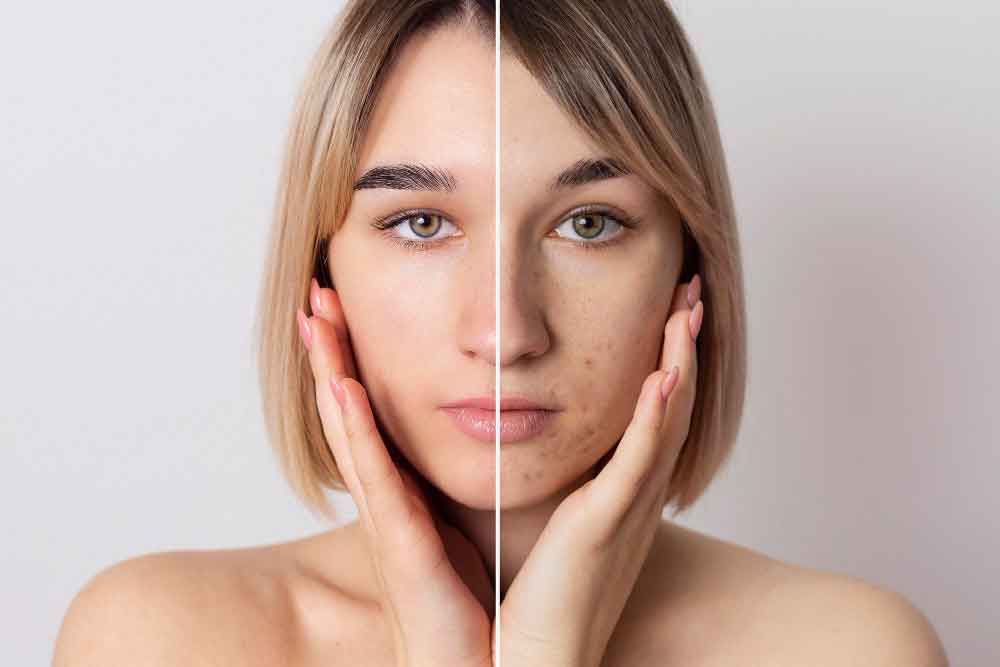How Are Hyperpigmentation and Melasma Different?
Hyperpigmentation and melasma are almost similar, as both cause discoloration of the skin. Hyperpigmentation is a broad term for all pigmentation in the skin. But melasma is a type of hyperpigmentation. We'll look at their similarities and differences in this article.
Hyperpigmentation
Hyperpigmentation is an umbrella term used to cover many conditions of skin discoloration. Liver spots, freckles, and melasma all come under the category of hyperpigmentation. Although many factors cause different types of hyperpigmentation such as acne scarring, inflammation, and medication, the main cause is sun exposure. If it is left untreated, harmful sunrays cause damage in the form of freckles and more severe skin conditions like cancer.
Most hyperpigmentations are harmless and many other forms can be treated by using topical creams, vitamin C, and other treatments. In some instances, hyperpigmentation is a sign of underlying conditions, so it’s best to consult a dermatologist for your skin condition.
The main symptom of hyperpigmentation is dark spots on the skin. They can develop anywhere in the body and can vary in size.
If commercially available medications are not appropriate, use custom-made dermatologic medication. We create medicines in different dosages and form for each individual. You can contact us at 210-809-6607, and we will deliver the medication that is right for you.

What are the causes of hyperpigmentation?
Hyperpigmentation is caused by sun rays and excess production of melanin. Other factors that can contribute to hyperpigmentation are acne, hormone changes, oral contraceptive use, pregnancy, and trauma to the skin.
What are the different types of hyperpigmentation?
Post-inflammatory hyperpigmentation :- Any type of inflammation and injury to the skin results in hyperpigmentation. It is not permanent and may last for a few weeks to months. Acne and eczema are the most common causes of this type of hyperpigmentation.
Sunspots :- Also called age spots, resulting from excessive exposure to sun rays. And usually appears on sun-exposed areas such as the face and hands.
Primary pigmentary disorders :- Similar to how some people are prone to getting skin problems like eczema and acne, they are predisposed to developing skin pigmentation as well. Hyperpigmentation occurs in primary pigmentary disorders without any other symptoms. Melasma is the most common primary pigmentary disorder.
Melasma
Melasma is different from other types of hyperpigmentation by its cause. It is caused by hormonal changes in the body. It is usually found in women due to this hormonal cause. It is referred to as the “mask of pregnancy” as pregnant women are more prone to this condition. It mostly occurs on the face - forehead, cheeks, chin, and nose. Asian, Latin, Middle Eastern, and African descent, and people with a history of melasma are more prone to melasma.
What stimulates melasma?
Melasma is caused by melanocyte-stimulating hormone (MSH). The pigment-producing cells are called melanocytes. MSH activates melanocytes which result in skin discoloration. Numerous things, such as heat, stress, dehydration, obesity, and exposure to the sun, can stimulate MSH.
One of the main factors that can cause melasma to develop is pregnancy, which indicates a connection between high levels of estrogen and progesterone and the development of melasma lesions. But always consult a medical provider to know the exact cause of your skin condition.
Medication, hypothyroidism, or certain type of makeup or soap make you more susceptible to melasma.

How to stop melasma from spreading?
- Limit your sun exposure.
- Apply SPF while going outside.
- Continue prescribed treatment.
- Use gentle soap and cleanser on the face.
As you can’t control the factors that cause melasma, you can take care of your skin. Maintain healthy skin by following a daily skincare routine that includes cleansers, creams, and moisturizers.
Melasma vs Hyperpigmentation
Although both melasma and hyperpigmentation appear the same, the hormonal aspect differentiates the two. Melasma is usually symmetrical as it appears on both sides of the face. Melasma looks like blotchy patches on the face, it sometimes affects the arms, neck, and upper back, which are sun-exposed areas. It is because of this reason that most people with melasma notice their symptoms getting worse during the summer.
Hyperpigmentation can appear as freckles, dark spots, or larger dark patches and is usually very focused. With more sun exposure, sun-induced hyperpigmentation slowly gets worse each year. Lighter skin tones are more likely to experience sun-induced hyperpigmentation, while darker skin tones are more likely to experience post-inflammatory hyperpigmentation.
Why sun protection is important?
Sun exposure is common in both melasma and hyperpigmentation. All forms of hyperpigmentation, including melasma, are caused in part by prolonged sun exposure. Even worse, unless the harm has already been done, it is impossible to determine how much sun exposure is too much. Wear proper clothing and apply sunscreen if you wish to avoid these conditions.
A dermatologist should be consulted if you notice dark patches appearing on your skin or elsewhere.
